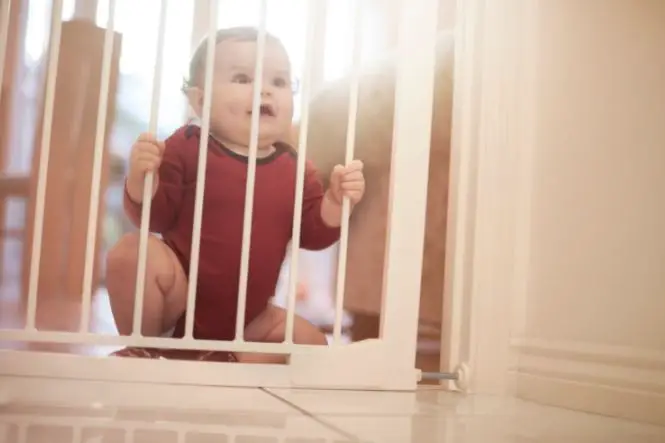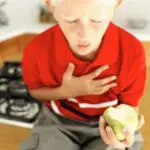Safety gates are standard equipment for any parent wanting to keep a toddler safe. Yet how can we be sure that the safety gates we buy really are safe?
Most safety gates and ‘safety barriers used in the home that limit access to the stairs of children under 24 months old’ are manufactured to BS EN1930. Although there is no statutory requirement to comply with the standard, most safety gate manufacturers claim their products conform. The Royal Society for the Prevention of Accidents (RoSPA) advises that if a gate fails to meet the specific requirements of BS EN1930, it would not be considered a safe product. We’ve found a great range of <#70#>safety gates at John Lewis.<#>
Table of Contents
Gates Fail to Meet the Standard
In 2005, RoSPA and Which commissioned research on the safety of the best selling baby gates on the market. Though all gates complied with BS EN 1930, the RoSPA survey found that 11 of the gates failed, on average, four clauses of the requirements.
The requirements cover the following areas:
All manufacturers disputed the failings and many of the gates tested may still be available. So it is always worth checking all safety aspects of any product before buying or using it.
What Type of Gate to Use?
When choosing a baby gate you need to consider how it will be used and its location. Think about how often you will need to go through the opening that you are making safe; it may be blocking a rarely used opening, or preventing a child from a potential danger zone such as a kitchen or stairs.
Here are some points to bear in mind:
- Gates and barriers must always be mounted between two solid surfaces.
- Gates with a bottom threshold should not be used on stairs because of a tripping hazard.
- Pressure mounted gates are sometimes considered unsafe for use on stairs because they can by pushed over with force.
- Pressure fit barriers which cannot be opened like a gate (but have to removed and replaced), should not be used in well-used areas. Adults are often tempted to climb them and toddlers may attempt to copy. This type of gate is not safe to use on stairs.
Other Considerations
- Look at safety gates and make an informed decision before your baby becomes mobile.
- Ensure the gate is kept closed whenever not in use.
- Never hang or drape anything over the gate.
- Follow the instructions when installing; these will include details like the maximum space between floor and gate (5cm).
- Make sure the gate is secure when pushed or pulled (babies and toddlers take great pleasure in grabbing, swinging, licking and bashing the bars).
- Carry out regular checks on the open/closing mechanisms and the attachments.
- Think twice about using second hand gates or barriers, many older style gates are dangerous.
- Don’t be tempted to climb over a gate, no matter how agile you are!
And Finally…
Encourage your baby to treat stairs with respect and take a look at our article on Choosing A Safety Gate which gives useful information on the types of stair gate available.


